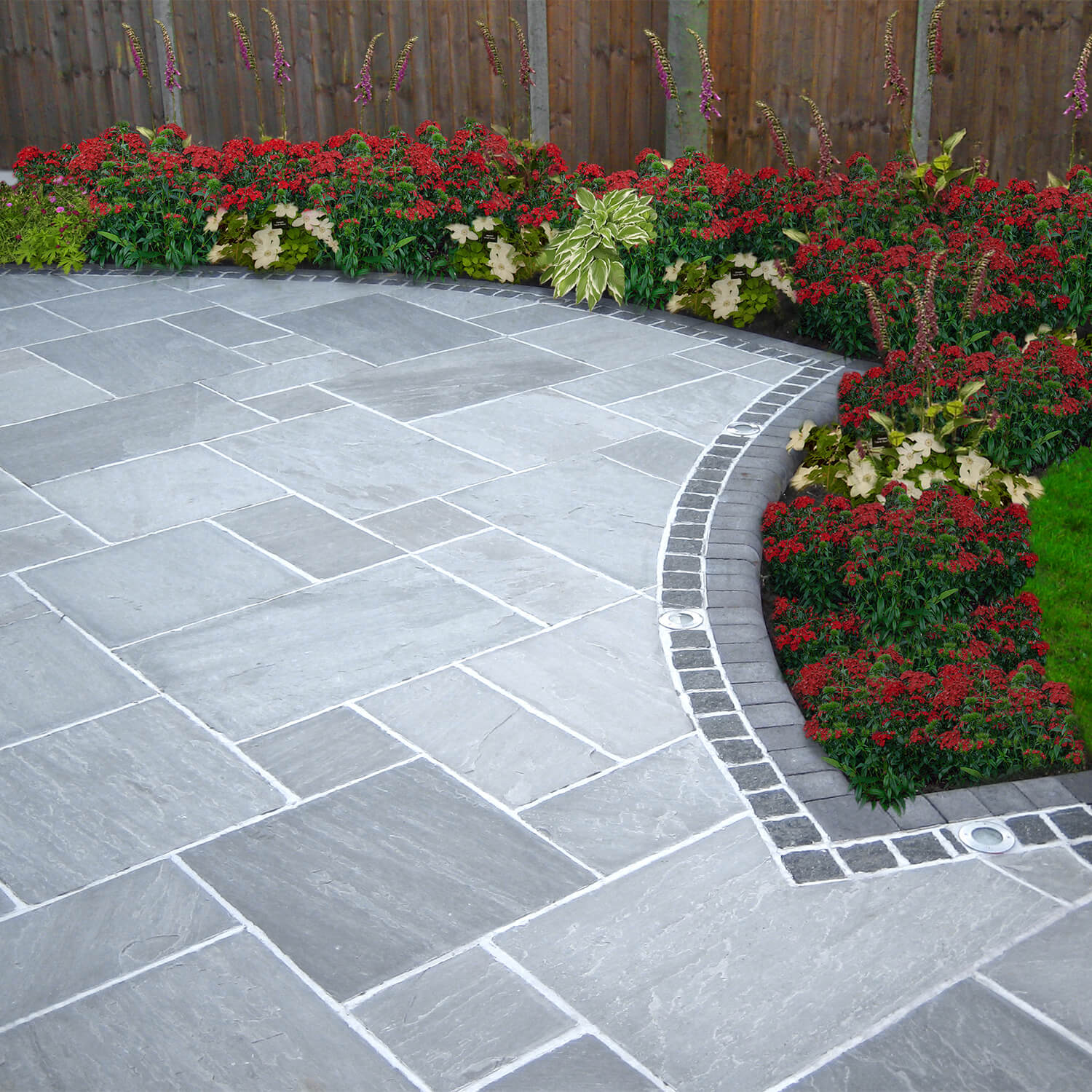Indian sandstone has the versatility and natural good looks that has made it an extremely popular choice for garden patios, outdoor pool surrounds and driveways but if you don’t lay it in the correct way, its beauty won’t last.
Like every paver it needs adhesive or mortar to ensure that it’s stable and durable. You wouldn’t want it to become uneven or show discolouration underneath for example, which is why sand alone doesn’t cut it.
Consider just how heavy a slab of sandstone weighs and how that might affect a bed of sand. It’s going to move and erode isn’t it?
That doesn’t mean you can’t use sand, you just have to be able to mix it with something else that will help the slabs bond with the ground and fix them firmly in place.
One solution is to mix sand and cement to give the much-desired adhesion and longevity.
Why cement?
Cement gives your sandstone slabs enough to grip onto the base. If you lay the pavers without it, chances are the slabs will become unfixed as soon as there’s a downpour. You need to lay the best foundation you can that will work hard when it comes to bad weather, specifically drainage and finish.
Cement is useful in this instance as it is a binder, it sets, hardens and adheres to other materials to bind them together.
It is usually combined with either sand or gravel or in some instances both and when used with sand, the by-product produced is what is known as mortar. What more could you need to to bind your sandstone pavers with the ground?
Once you have mortar, you need to add water; without water cement will not set and you will be left with a mortar that is too fragile to be of any use.
Seven steps to laying sandstone slabs on concrete
-
Mark out the area you are paving.
-
Dig a bed that’s 105mm deep.
-
Add a 50mm sub-base layer.
-
Mix the concrete, to a ratio of one part cement to six parts ballast.
-
Add a 30mm layer of concrete mix.
-
Lay the paving slabs, leaving 8 to 10mm spaces between them.
-
Fill the joints between the slabs with the mortar mix.
Is there an alternative to cement?
If you’re not securing your patio with mortar, then an alternative bed of sand and gravel can be used instead. The sand will provide solidity and the gravel will help with drainage.
Before laying your sandstone pavers you need to
Prep your area
When paving an area you need to ensure it’s reasonably level and that there are no problems with drainage. These are the main elements that will ensure maximum longevity. If you’re building a patio for example you may think that the aspect or view is important but if you want to create one that will last and look good beyond a few seasons then these are the two criteria that matter.
Lay your patio fabric
Cover the area with landscape fabric. This is a step that many people forget, or find a pain as it is an extra task but you’ll have less work pulling weeds from the cracks between your patio slabs later.
Install a frame
Construct your frame with both wooden planks and string. The reason for this is to keep the area for the paving in place and prevent it from moving.
If using gravel
Pour in a 100mm layer of gravel. The amount you use is important as you need enough to be effective as drainage.
Once you’ve added the gravel, use a screeding tool like a board to smooth off the layer and make sure it’s even.
Pour the sand
Pour the sand, and use the same screed tool to make sure you have a flat, firm layer of sand. When done correctly, this layer will hold as firm as cement while still allowing the water to escape below.
Place sandstone slabs then fill gaps with sand
Once you’ve put the last paving slab down, make sure everything looks right and start filling in the gaps with sand, sweeping them until they’re filled.
Can you ever use sand on its own?
This might be possible with slabs that are bigger, as their sheer weight will mean they don’t move so easily but it is best to bed your sandstone slabs down with a simple mortar mix rather than directly onto sand.
For more information about sandstone and its uses contact The Premium Paving Company on 0800 689 5236 or email to info@premiumpavingco.com








